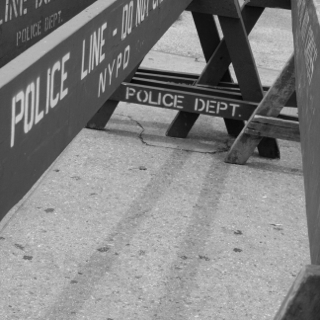Time for another confession. I love pit bulls. I think they are so cool. I’d definitely get one (or more) if I could. But unfortunately, I am allergic to dogs, I live in a small house, and the pet I do have is definitely an only child. So I’ll just have to “settle” for a pit bull in a cat costume.
I’ll also take any chance I can get to advocate for these wonderful dogs, which are all too frequently exploited, vilified and discarded by irresponsible and ignorant people. And I’m not the only one.
Recently I came across an article about a program that trains rescued pit bulls as police dogs. No, I am not kidding. Along with German Shepherd Dogs and Belgian Malinois, Bloodhounds, Dutch Shepherds and Labrador Retrievers and similar breeds, some American law enforcement agencies are using pit bulls as police dogs.
As a former cops and courts reporter, and as someone who volunteered at a local animal shelter for several years, I think that is pretty (bleeping) awesome. In fact, I think it’s so awesome, I’ve probably written about it before. But if I did, it was more than a year ago… so I’m going to write about it again.
Animal Farm Foundation + Sector K9 = Success
The story that caught my attention was about Sector K9’s latest graduating class, starring Pepper, Hype, and Maverick. All three are pit bulls, all of them were pulled from animal shelters around the country, and each of them now has a second chance at life.

Grant funding from the New York-based Animal Farm Foundation allows Sector K9 to train rescued pit bulls as police dogs. But not only that. The Midlothian, Texas organization trains their handlers, too. Once they’ve completed the program, some of the canine and human partners hit the streets in search of drugs and guns. Others head “back to school,” where they help provide a secure learning environment for kids. All of them are expected to participate in community out reach, and act as ambassadors for the breed.
“Participating in our Police Detection Dog Donation Program is more than conducting a sniff of a vehicle or a building. It’s about educating school kids and sharing your K9 with the community at events,” Sector K9 says. “We carefully select departments and handlers who share these values.”
Saving money, saving lives
According to the Animal Foundation, law enforcement agencies often spend a small fortune (more than $20,000) to acquire one purebred, purpose-bred dog capable of doing the same jobs as a Sector K9 graduate.
On the other hand, Animal Farm Foundation’s grant allows authorities to acquire K9s at no cost. Just as importantly, it improves the quality of life in the communities they serve while giving the dogs opportunities to do meaningful work.
So far, brief bios for more than 30 detection dogs and their partners are featured on the Animal Foundation’s website.
There’s also plenty of praise for the dogs from the people who know them best.
“The best thing about having K9 Wilson is that he did not just benefit one community. He has brought several communities together because other agencies have contacted us to do searches for them as well, thus creating a partnership between our communities,” says Officer Lucky Huff of the Quinton Police Department in Oklahoma.


